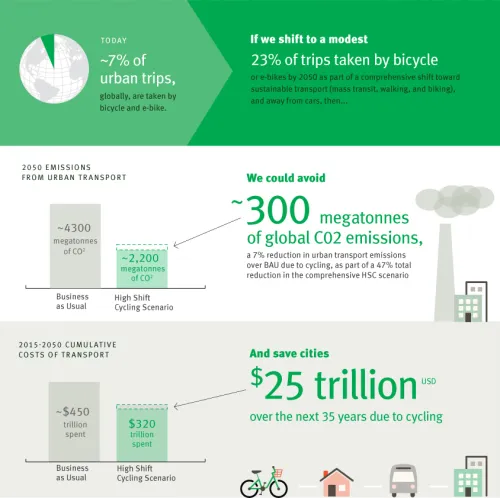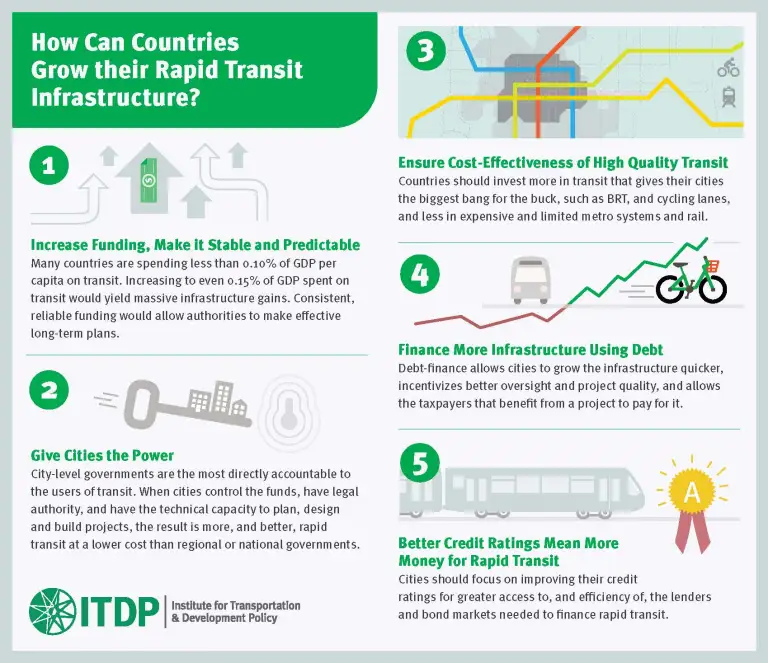Written by Unknown
At last displaying unity and resolve equal to the challenge, the Paris Agreement represents a turning point for the world. Alone, the agreement is not enough to prevent climate change’s most devastating consequences, yet it provides the foundation and framework for continued progress for years to come. At COP21 in Paris, both cities and transportation received prominent recognition for the role they can play in reducing emissions, but further integration of transportation is necessary to achieve the ambitions of the Paris Agreement. With the world resolved to take action, responsibility now shifts to those at the local level. Cities must focus on transformative transportation strategies supported by effective financing and strong urban governance to increase our climate ambitions, slash emissions, and build a sustainable, equitable future.
Written by Unknown
The Paris Agreement marks the first time that nearly the entire world, 195 nations, declared their intention to combat climate change. The Agreement achieved many things. It affirmed the goal of keeping global temperature increases to 2 degrees, and set an aspiration of reaching a 1.5 degree scenario.
On financing, it calls for a continuation of the policy for richer nations to contribute $100 billion annually to a fund supporting sustainable growth in developing nations. Perhaps most importantly, the agreement sets a floor for action, and provides a structure for nations to increase their ambitions every five years by submitting new emissions reductions plans. While not a perfect document, the Paris Agreement sets a strong basis for continued progress.
And yet, the commitments made in Paris are not enough. With negotiations complete, the world is still on track for a 2.7 degree temperature increase – enough to cause devastating draughts, floods, and storms. It is critical that local actors take the lead and continue to push to cut more emissions, sooner.
Fortunately, more and more leaders are recognizing that transportation and sustainable development offer previously untapped opportunities to take action and limit emissions. Already in Paris, a conference of 500 Mayors released the Paris Declaration, promising to look to transportation, waste management, and urban design to find ways to reduce greenhouse gas emissions. In any plan to achieve a 2 degree or less scenario, transportation will play a critical role.
Our best bet for achieving our climate goals is a focus on ‘avoid’ and ‘shift’ strategies. Until now, much of the focus on transport has centered on “improve” strategies, such as fuel efficiency and electric vehicles. While these strategies yield incremental results, they do not create the transformational change necessary to dramatically improve our climate future. Instead, leaders should encourage development plans that avoid the need to travel distances (e.g. transit-oriented development) and shift trips to low carbon modes (e.g. walking and biking). These strategies have incredible potential for environmental and financial benefits, and have the greatest potential for transformative change.

A shift toward cycling, as part of a comprehensive shift toward sustainable transport, would bring dramatic emissions and financial savings.
In addition, shifting to cycling, walking, and public transport results in many co-benefits beyond the climate impacts. Avoid-shift strategies also lead to safer streets, better air quality, and more vibrant public spaces.
In addition, shifting to cycling, walking, and public transport results in manMany of these outcomes are articulated as goals by the international community, including in the Sustainable Development Goals. Transport projects can contribute to progress and metrics for the world’s development and climate goals in tandem. Our challenges are too great to solve one at a time.y co-benefits beyond the climate impacts. Avoid-shift strategies also lead to safer streets, better air quality, and more vibrant public spaces.
To make change happen, the global community must improve behind-the-scenes financing and governance systems. Expanding the options for project financing, such as the Green Climate Fund, will allow more cities to start transformative projects. At the same time, local actors must increase funding levels for transportation and stabilize funding streams to allow long term planning.
In governance, increasing institutional capacity will create more impactful transport solutions. An important piece of this puzzle will be strengthening relationships between the transport sector and the environmental and climate sectors. Improving the systems for implementing solutions will maximize results and open up new opportunities to slash emissions.

Reaching our most ambitious climate goals requires immediate and regular work. The Paris Agreement is not set to take effect until 2020. Meanwhile, it is critical that nations not lose sight of their pre-2020 commitments. By focusing on effective transportation strategies, cities can improve not only the environment, but their quality of life.
From how we see friends, build communities, and get to work, transport impacts all parts of our lives. The Paris Agreement brought the world together. Now, to assure a vibrant future, it’s time to act.
